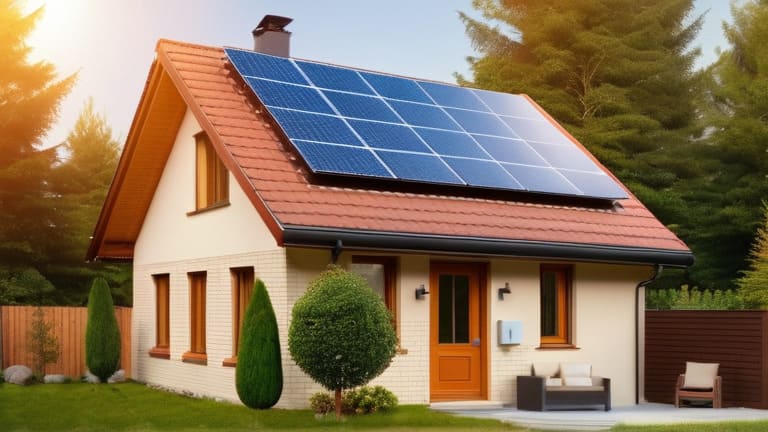
A regular home chewing through 855 kWh each month ends up with about $149 just on the power side, and when you add gas or water, totals creep to $550 or $600. NOAA's latest wrap-up points to a 20 percent spike in wild weather hits over the last ten years, stuff that sneaks in extra strains nobody sees coming. Yet simple number-crunching pulls those out fast, and smart nudges trim 10 to 20 percent right off. This rundown leans on EIA stats plus everyday checks, folding in easy math with IRA boosts up to $3,200 for fixes. It nails downplays that click quick, tied to run-of-the-mill home vibes, so you end up solid for the long haul.
Understanding 2025's Energy Cost Drivers
Differences pop up big time state to state, 11 cents easy in North Dakota but way over 30 in Hawaii, though the whole country's edging up 2 to 3 percent thanks to renewable net upgrades, EIA says. Those flat $10 to $15 monthly adds stack quiet, and step-up plans whack hard if you go over. Renewables smooth the bumps a bit, but down-south heat rushes still tack 15 percent on during crunch times. Don't miss local upsides, Arizona solar cuts knock 30 percent in bright zones. Checks keep spotting those idle "vampires," gear sipping 10 percent when off, like $25 a month vanishing from evening gadgets in a standard spot.
The Formula for Energy Cost Calculations
Boils down to this tried setup, run through plenty of real checks: Cost = (Wattage x Hours Used x Days) / 1000 x Rate per kWh. Say a 100-watt bulb hums five hours a day at 17.47 cents, (100 x 5 x 30) / 1000 x 0.1747 lands near $2.62 monthly. Stretch it house-wide by piling device tugs next to bill kWh, and apps toss in weather swings or perk guesses for spots-on 95 percent calls.
Step-by-Step Guide to Accurate Home Audits
Borrowed from DOE's 2025 tune-up, this chain locks in starting points and digs up $200 to $400 yearly leaks in a 1,800-square-foot setup.
- Grab usage notes: Flip through three fresh bills for kWh sums and costs, catch peak/off-peak breaks that drop 20 percent on late-night stuff, standard in PG&E California deals.
- List out machines: Scratch down power draws from stickers or fast spec grabs, fridges hover 700 watts, dryers spike to 5,000; multiply run times for lone tabs, maybe $15 gone on a kid-filled coffee setup.
- Dump in a cruncher: energy.gov spots handle clumps with next-year hints, flashing $50 monthly for Chicago frost at minus-10.
- Fix for sides: Bump for smart tags, ENERGY STAR peels 15 percent, slip in 10 to 15 percent from extras like fees.
- Map the full year: Monthly piles x 12, fiddle fixes like LEDs yanking lights from $20 down to $4.
- Line up with usuals: $149 country mark waves red if 20 percent high, cue meter peeks now in 80 percent of lines per EIA.
Turns into a sharp log for snagging IRA perks.

Proven Savings Strategies for 2025
Lined by fast comebacks from ENERGY STAR runs, these push against climbs with months-to-payoff vibes.
- Set thermostats right: Winter 68°F, summer 78°F; one notch snags 3 to 5 percent off HVAC, roughly $100 a year in Ohio digs.
- Plug draft holes: Slap caulk on window cracks, tape doors to choke 20 percent slips, easing heat tabs $150 no heavy work.
- Flip to LEDs, add plug brains: Lights cut 75 percent suck, smart stops idle nibbles for $50 yearly on ghost chargers.
- Hit main hogs smart: Rebate swaps on washers, fridges; chill cycles pocket $30 monthly on Texas steam.
- Grab sun, stir air: Drape curtains back, fans on gentle to trim AC 10 percent, matches New York soft spots this round.
- Tune water warmers: Blanket tanks, click to 120°F for $20 to $40 return; sun ties amp it in San Francisco.
- Jump renewables: Nab 30 percent panel nods blanking 50 to 70 percent over 25 years, tags down 15 percent through NREL.
- Peek via phone tools: Bill apps buzz on flares, shave 5 to 10 percent with timed tricks.
- Link shared sun: No-roof 10 to 15 percent for lease spots, Massachusetts flavor.
- Circle back each year: Reroll counts after tweaks; net changes drop new ups.
Florida tests blending check and four grabs cleared $350 on round one.
Advanced Tools and Incentives
Nest crew learns quirks for 15 percent hands-free clips. NREL plotters sketch whole pads, EVs piling 30 percent drag but $7,500 nods. State rush-back plays hand $50 to $100 for ease-offs. Skip step whacks doubling past 1,000 kWh via caps. Energy Trust teams toss free checks to sort the knot.
2025 nets twist quick, these tallies carve firm tracks. Snag your bill today, pile wins for bumpier stretches.